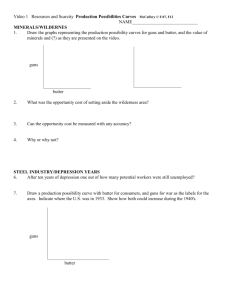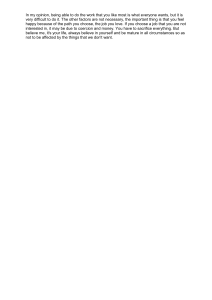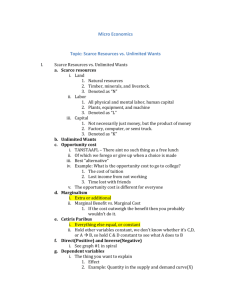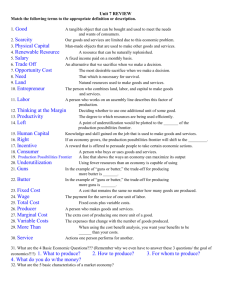Uploaded by
NgKhoiNguyen3006
Opportunity Cost Analysis: Guns, Butter, and Consumer Impact
advertisement
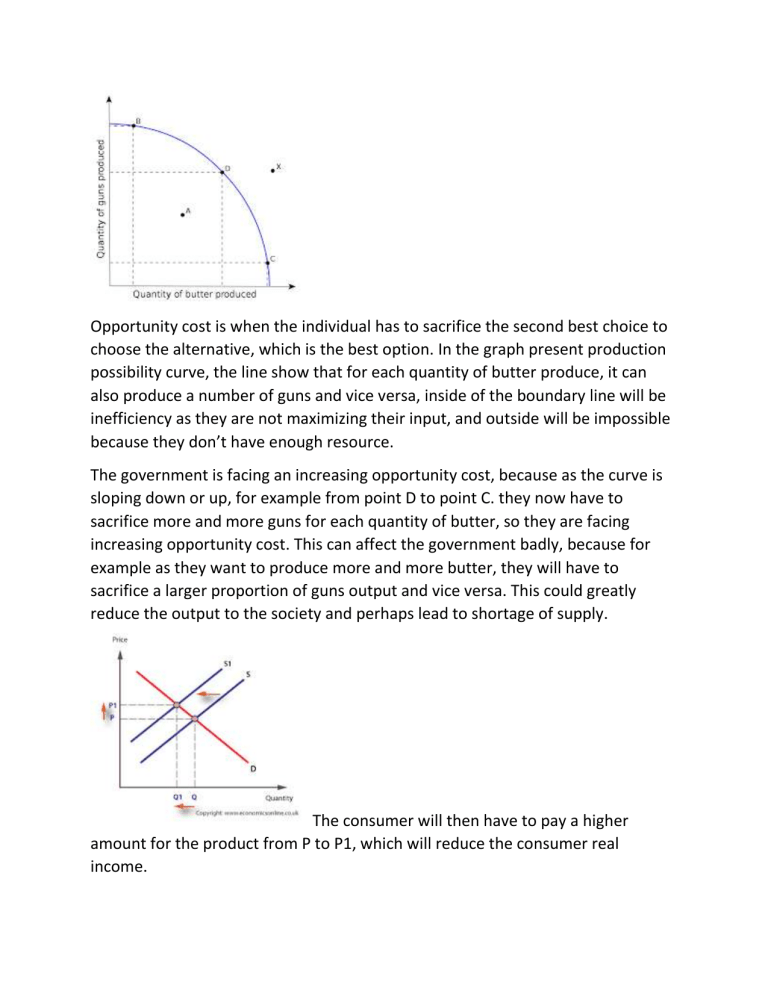
Opportunity cost is when the individual has to sacrifice the second best choice to choose the alternative, which is the best option. In the graph present production possibility curve, the line show that for each quantity of butter produce, it can also produce a number of guns and vice versa, inside of the boundary line will be inefficiency as they are not maximizing their input, and outside will be impossible because they don’t have enough resource. The government is facing an increasing opportunity cost, because as the curve is sloping down or up, for example from point D to point C. they now have to sacrifice more and more guns for each quantity of butter, so they are facing increasing opportunity cost. This can affect the government badly, because for example as they want to produce more and more butter, they will have to sacrifice a larger proportion of guns output and vice versa. This could greatly reduce the output to the society and perhaps lead to shortage of supply. The consumer will then have to pay a higher amount for the product from P to P1, which will reduce the consumer real income. In conclusion, the government can face an increasing cost in their decisionmaking. However, this is an assumption that the government is producing only two products, in reality there are many more factor to consider in. Also even if the government is producing two product, there is a possibility that the relationship between the two products is inversely proportion and the gradient is a straight line, not a parabola. Which means that the opportunity cost will be constant, not increasing.
